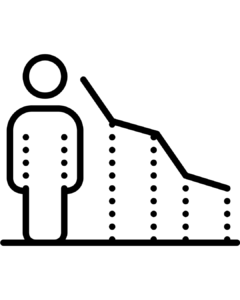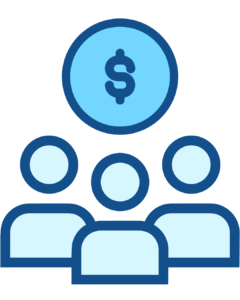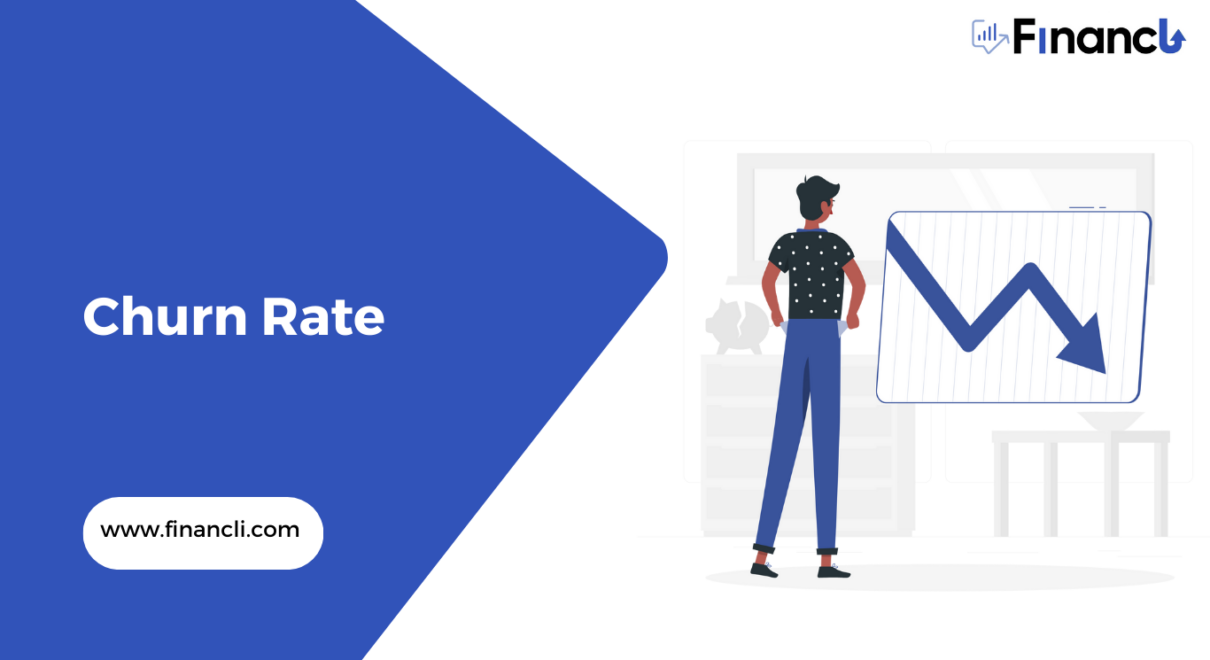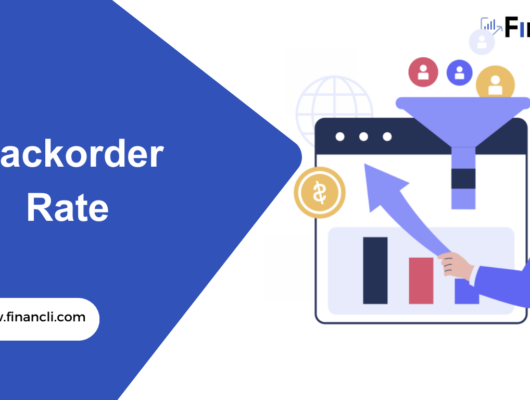Churn Rate
Churn rate is a business metric that measures the rate at which customers or subscribers stop doing business with a company over a certain period of time. It is also known as customer attrition, turnover, or defection.
The churn rate is essential for businesses, especially those relying on recurring revenue from subscription-based services or products – SaaS Companies. A high churn rate can indicate that a company is struggling to retain customers and may need to improve its product or service offering or customer experience to reduce customer turnover. On the other hand, a low churn rate is a good sign that a company is doing well in retaining customers and maintaining customer satisfaction.
Formula
The formula for churn rate is:
Churn Rate = (Number of customers lost during a given time period / Total number of customers at the beginning of the time period) x 100%
For example, if a company had 1,000 customers at the beginning of the month and lost 100 of them during the month, for that month, it would be:
Churn Rate = (100 / 1,000) x 100% = 10%
This means the company lost 10% of its customer base during the month due to customer attrition or defection.
What Is SaaS Churn Rate?
The software as a Service (SaaS) churn rate is when customers cancel or do not renew their subscriptions to a SaaS product or service during a specific period. SaaS churn rate is an important metric for SaaS companies because it measures their business model’s overall health and sustainability.

We express the SaaS churn rate in terms of percentage. And you can calculate it by dividing the number of customers who cancel or do not renew their subscription during a given period by the total number of customers at the beginning.
For example, if a SaaS company had 1,000 customers at the beginning of the month and 50 canceled or did not renew their subscriptions during the month. The SaaS churn rate for that month would be:
SaaS Churn Rate = (50 / 1,000) x 100% = 5%
This means the company lost 5% of its customer base during the month due to customer churn.
SaaS companies strive to keep their churn rate as low as possible. High churn rates can indicate customer dissatisfaction, product or service issues, or a lack of customer engagement. In addition, high churn rates can negatively impact a SaaS company’s revenue and profitability. Therefore, SaaS companies typically focus on reducing churn by improving their product or service offerings, enhancing the customer experience, and maintaining strong customer relationships.
Importance
There are several reasons why the SaaS churn rate is essential for SaaS companies:
- Revenue Predictability: SaaS companies rely on recurring revenue from customer subscriptions. So it directly impacts their revenue predictability. A high churn rate means the company will lose a significant portion of its revenue. This makes it difficult to forecast revenue accurately and plan for growth.
- Customer Retention: The SaaS churn rate is a measure of customer retention. A high churn rate means the company is not effectively retaining customers. This can negatively impact its reputation and limit its ability to grow.
- Customer Satisfaction: The SaaS churn rate is also an indicator of customer satisfaction. A high churn rate suggests customers are unsatisfied with the product or service. As a result, the company may need to improve its product, customer support, or overall customer experience.
- Customer Acquisition Cost: Acquiring new customers can be expensive for SaaS companies. A high churn rate means the company will need to invest in customer acquisition to maintain its customer base continually. Reducing churn can help reduce customer acquisition costs and increase overall profitability.
- Investor Confidence: SaaS companies often rely on funding from investors to grow and expand. A high churn rate can negatively impact investor confidence, making it more difficult for the company to raise capital and support its growth plans.
Overall, the SaaS churn rate is a critical metric that SaaS companies use to monitor the health of their business, identify potential issues, and drive customer retention and growth. By keeping it as low as possible, SaaS companies can increase revenue predictability, improve customer satisfaction, reduce acquisition costs, and drive investor confidence.
Ideal Churn Rate of SaaS
The ideal churn rate for a SaaS company can vary depending on the company’s business model, industry, and growth stage. Generally, lower churn rates are better because they indicate that a higher percentage of customers continue using the product or service, and the company is retaining more recurring revenue.

However, what is considered an ideal churn rate that can differ from company to company? Generally, a reasonable SaaS churn rate is less than 5% per month or less than 20% per year. SaaS companies with high customer acquisition costs may aim for an even lower churn rate to ensure profitability.
It is also important to note that the ideal churn rate can depend on the type of customers the SaaS company serves. For example, a company that serves enterprise customers may have it lower than a company that serves small businesses or individuals because enterprise customers tend to have longer-term contracts and more resources invested in the product or service.
Ultimately, the ideal SaaS churn rate allows the company to sustainably grow its revenue, maintain customer satisfaction, and continue attracting new customers. Therefore, SaaS companies should regularly monitor and analyze it to identify potential issues, test strategies to reduce churn and optimize their business for long-term success.
How to Reduce Churn Rate?
Reducing the churn rate is critical for the growth and sustainability of a SaaS company. Here are some strategies that SaaS companies can use to reduce it :
.Improve the Onboarding Process:
Enhance the User Experience: User experience is critical to customer satisfaction and retention. Therefore, SaaS companies should continually evaluate and optimize the user experience to ensure that it is intuitive, easy to use, and meets the needs of their customers.
.Provide Excellent Customer Support:
High-quality customer support can help build customer trust and loyalty, reducing churn. SaaS companies should offer multiple channels for customers to receive support and promptly respond to inquiries and issues.
.Offer Targeted Promotions:
SaaS companies can use targeted promotions to incentivize customers to continue using the product or service. For example, offering discounts or free trial extensions can encourage customers to continue their subscriptions.
.Monitor and Address Customer Feedback:
SaaS companies should regularly solicit customer feedback and use it to identify areas for improvement. Addressing customer feedback can improve the product or service, increase customer satisfaction, and reduce churn.
.Develop Personalized Engagement Strategies:
SaaS companies should develop personalized engagement strategies to keep customers engaged and interested in the product or service. For example, offering customized training or resources can help customers get the most out of the product or service and increase their loyalty.
.Regularly Evaluate Pricing Strategy:
Pricing can significantly affect customer churn. Therefore, SaaS companies should regularly evaluate their pricing strategy to ensure that it is competitive and provides good value to customers.
By using these strategies, SaaS companies can reduce churn rates and increase customer retention, which can help them to grow their business sustainably over time.
Examples

Churn rate is a commonly used metric for SaaS companies to measure the rate customers leave their service. Here are some examples of SaaS companies and their reported churn rates:
- Zoom Video Communications: In its Q1 2021 earnings report, Zoom reported a trailing 12-month net revenue retention rate of over 130%. This means its customers stayed with the company and increased their service spending.
- Dropbox: Dropbox reported a monthly churn rate of 4.5% in its Q4 2020 earnings report. This improved from the previous quarter when it reported a monthly churn rate of 5%.
- HubSpot: In its Q3 2020 earnings report, HubSpot reported a monthly customer churn rate of 1.4%. This improved from the previous quarter when it reported a monthly customer churn rate of 1.5%.
- Zendesk: Zendesk reported a monthly churn rate of 5.5% in its Q3 2020 earnings report. This improved from the previous quarter when it reported a monthly churn rate of 6%.
It is important to note that these churn rates can vary depending on the company’s business model, industry, and growth stage. However, by monitoring and optimizing it, SaaS companies can improve their revenue predictability, customer retention, and long-term success.






